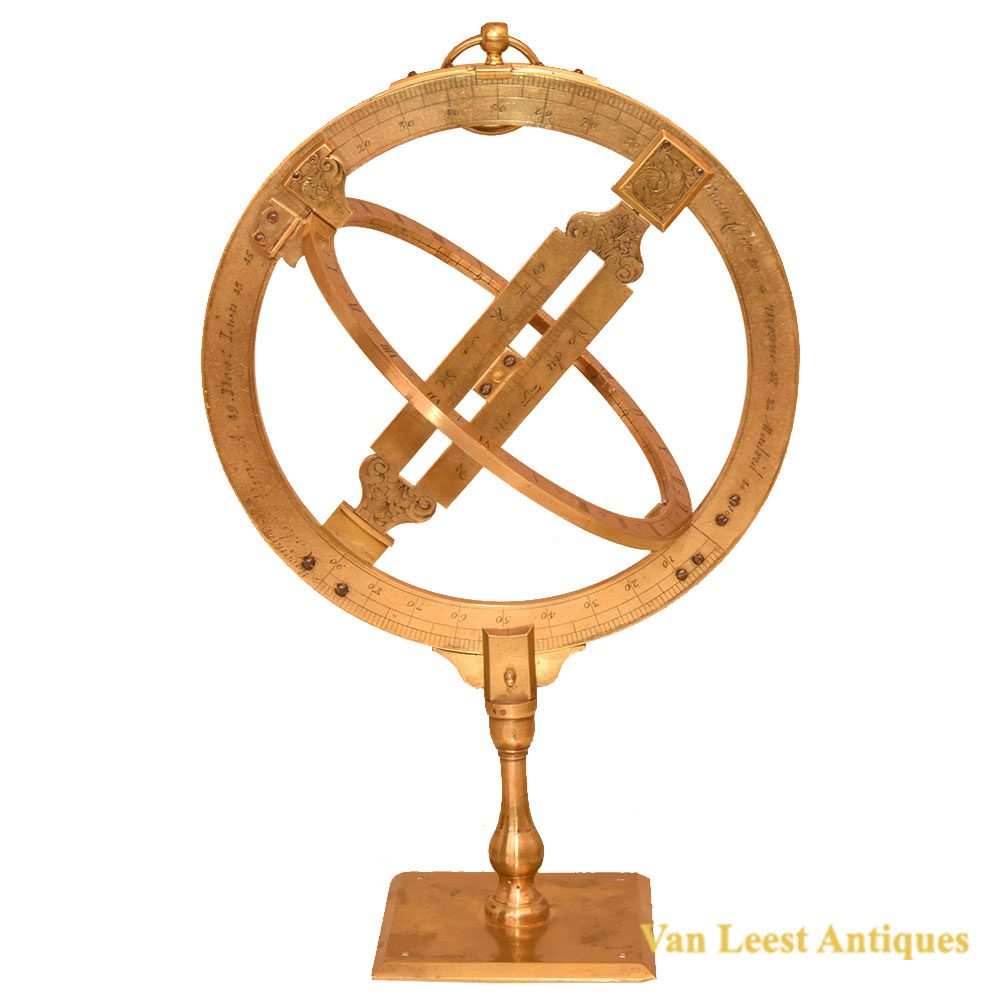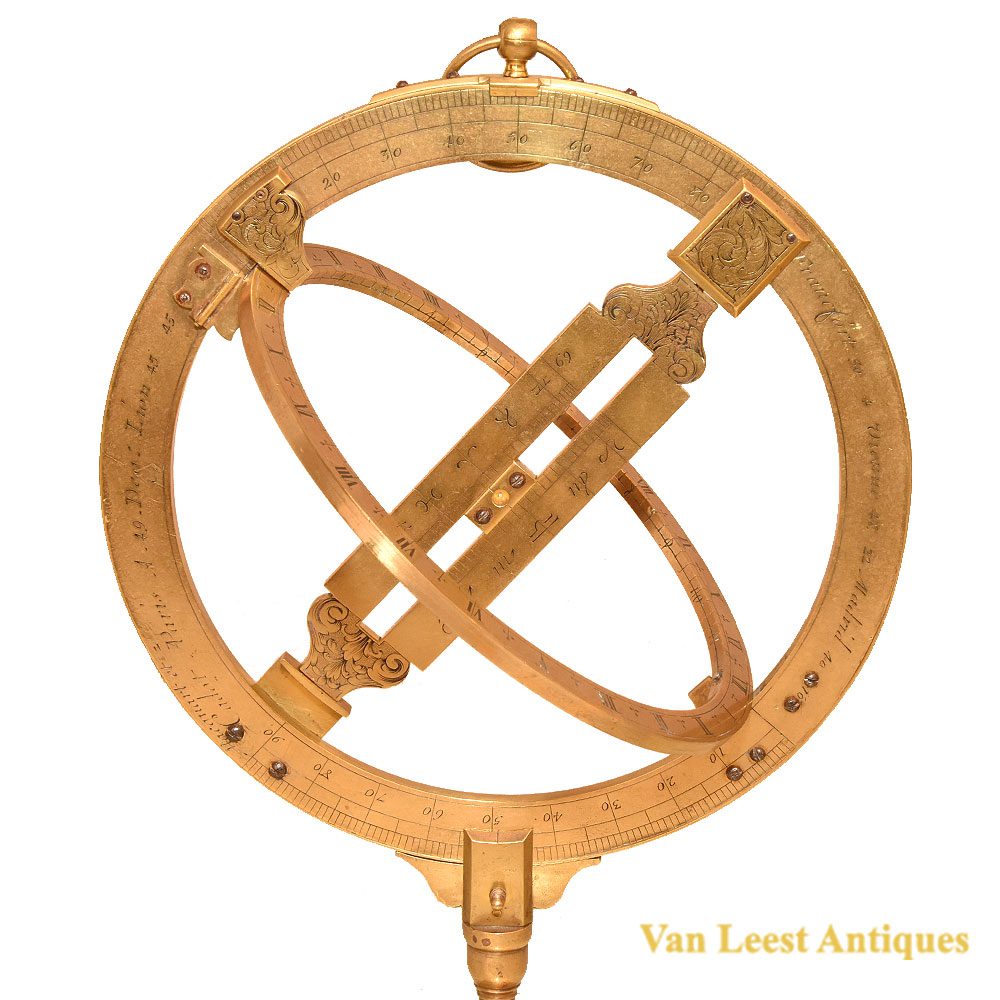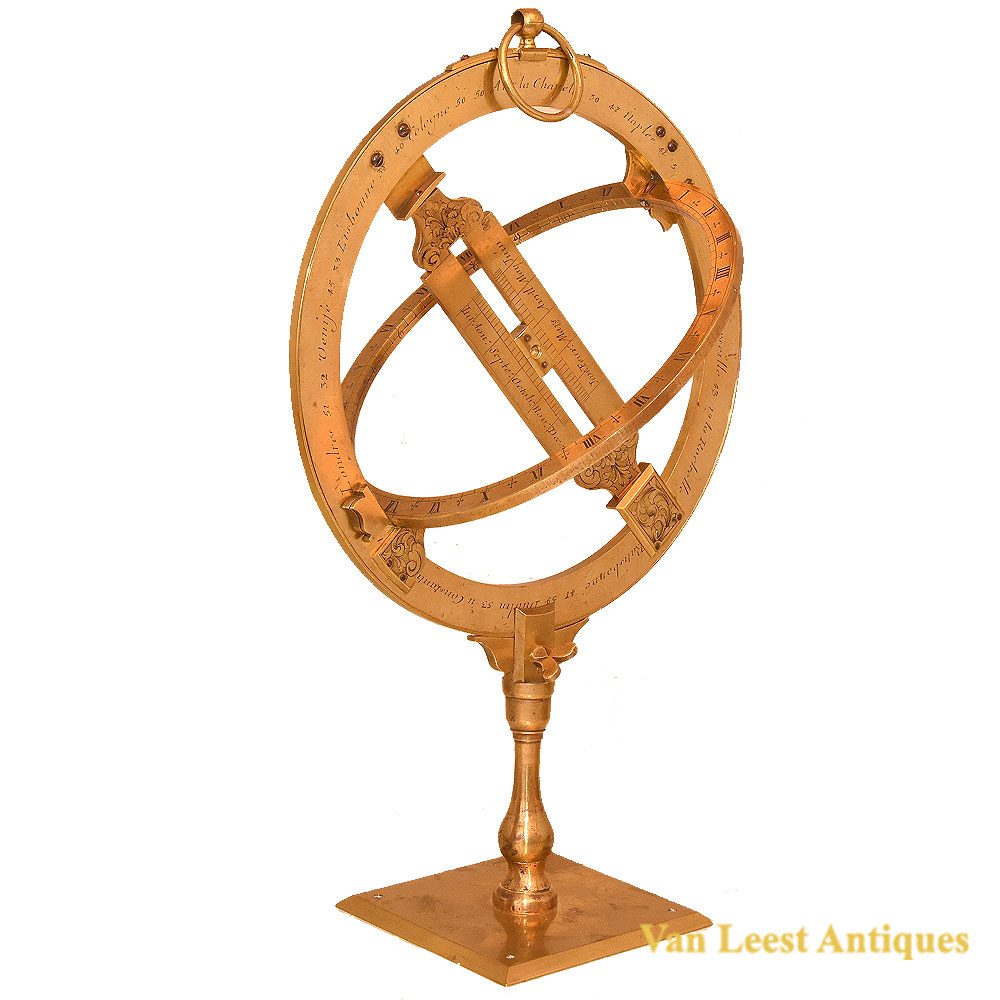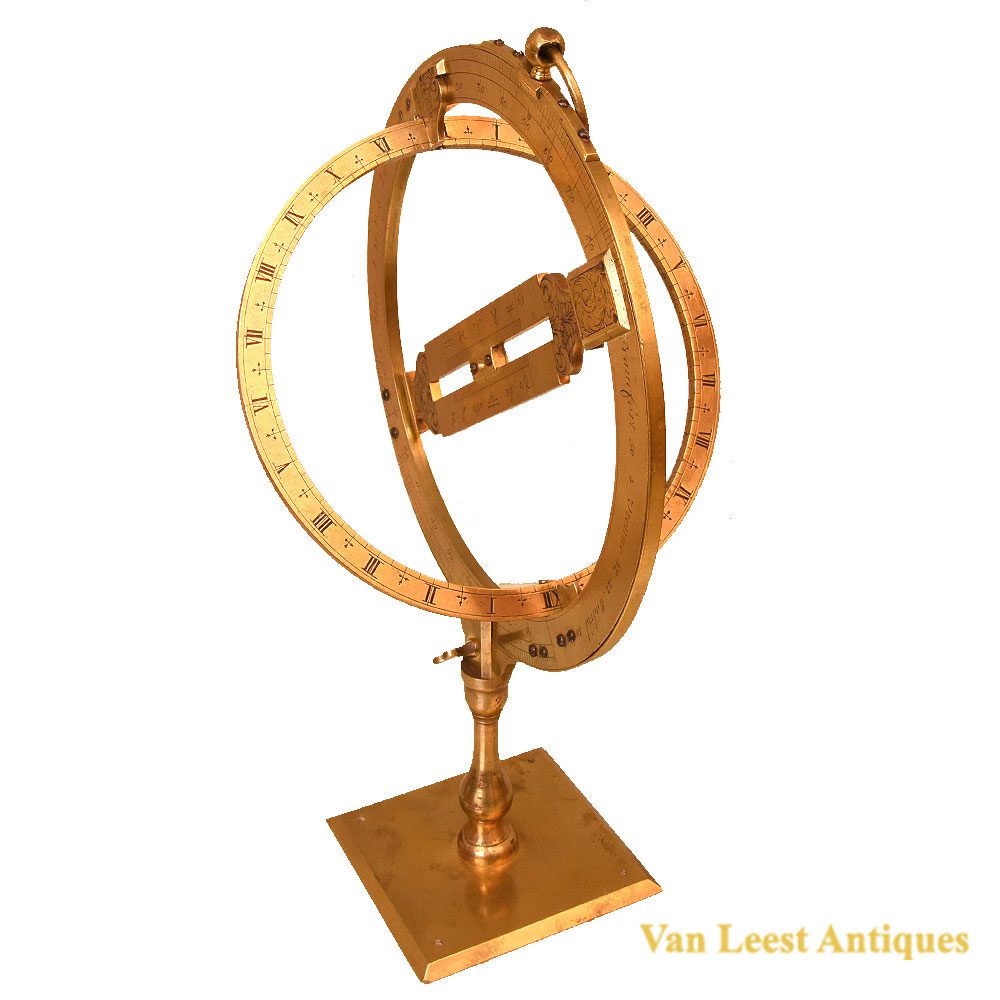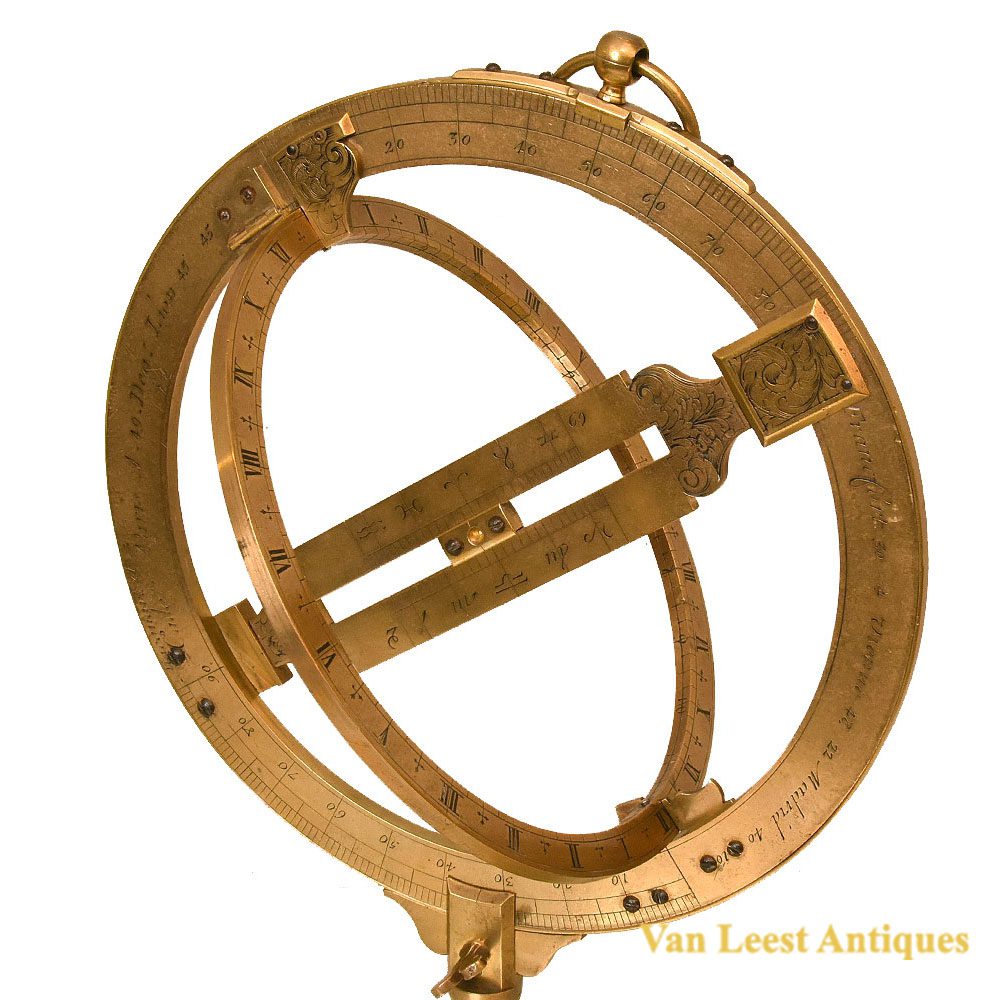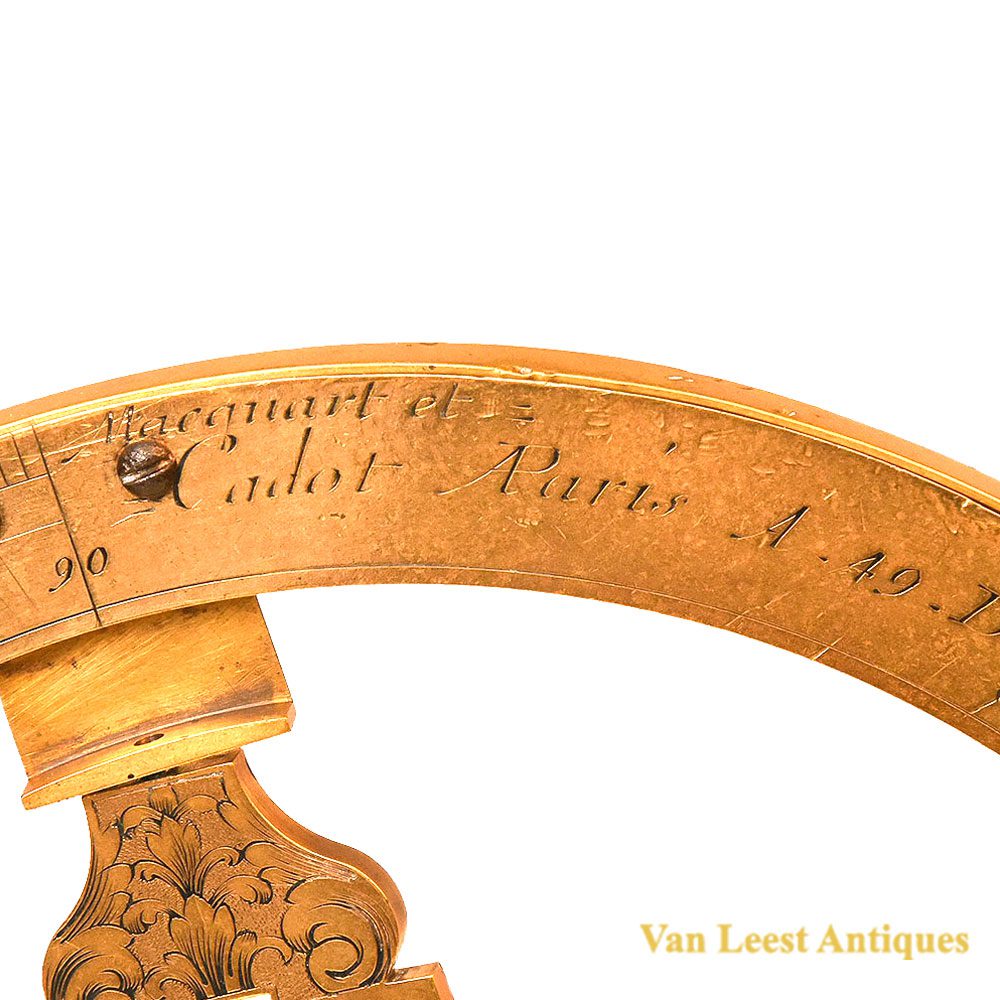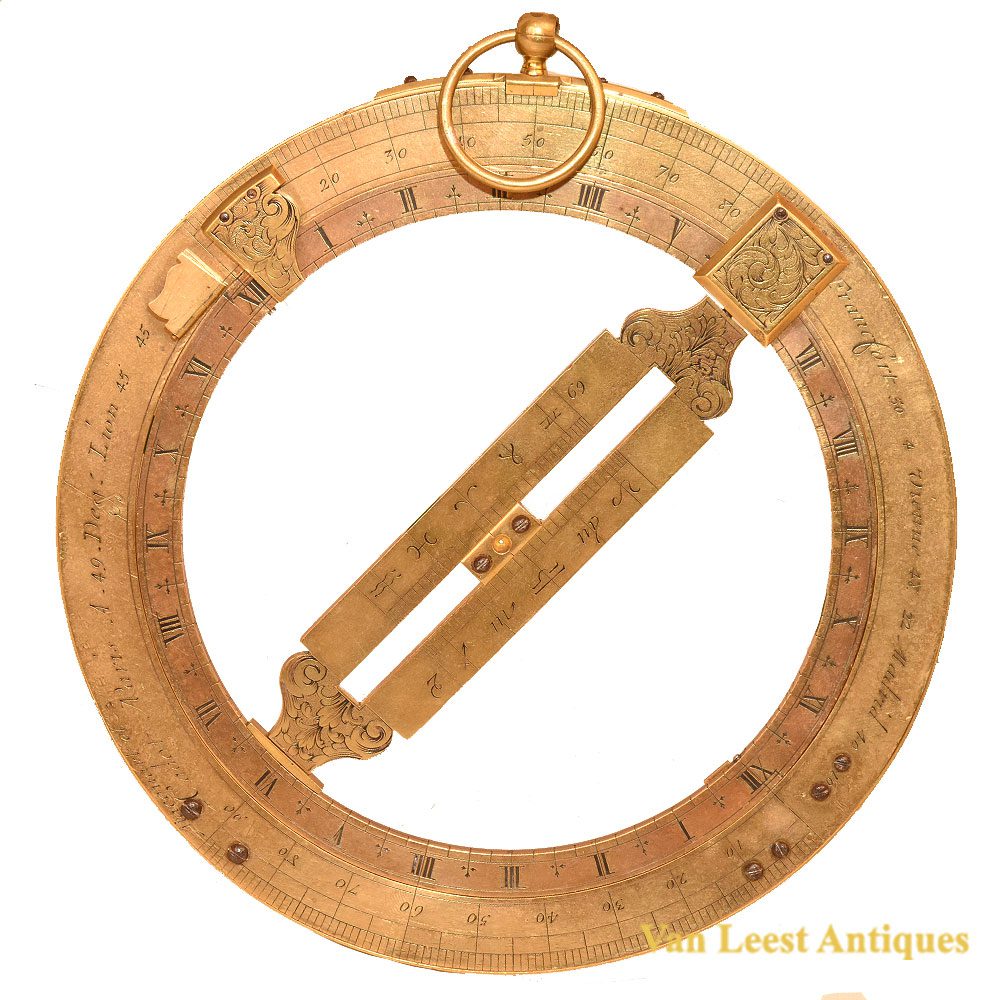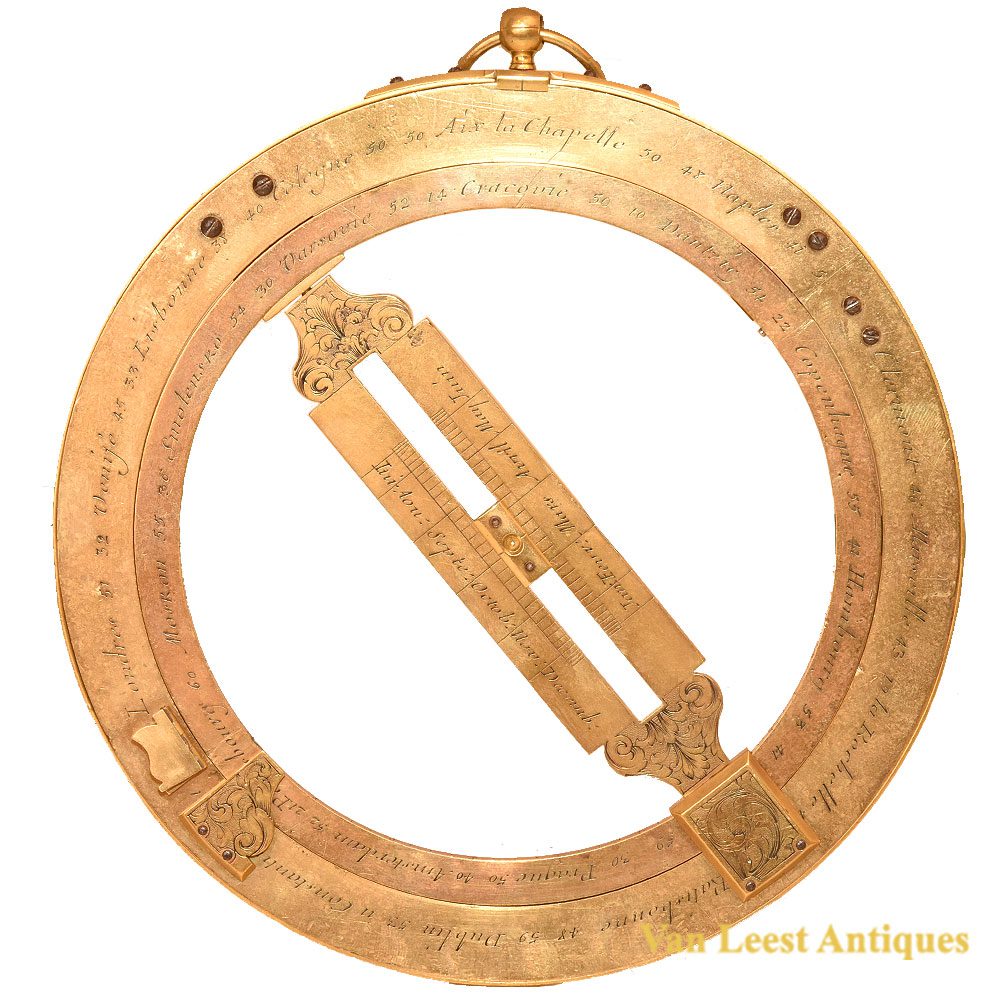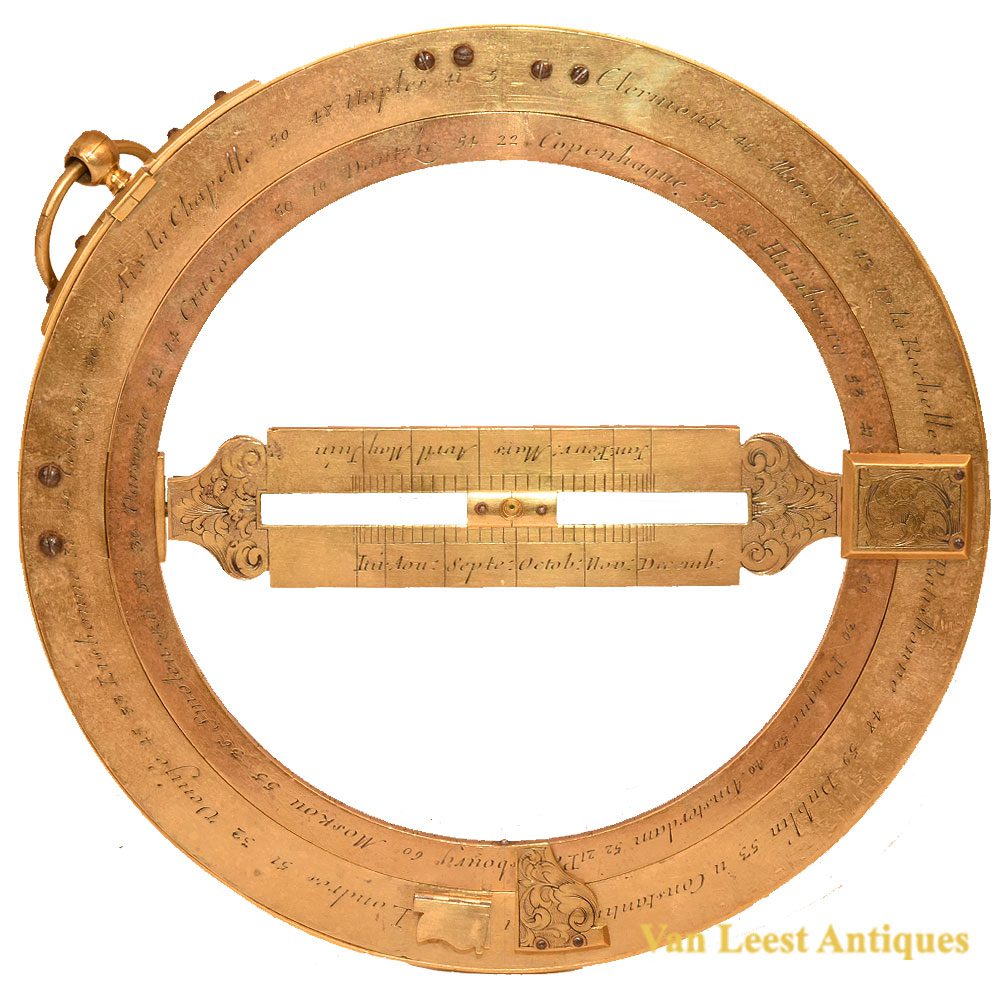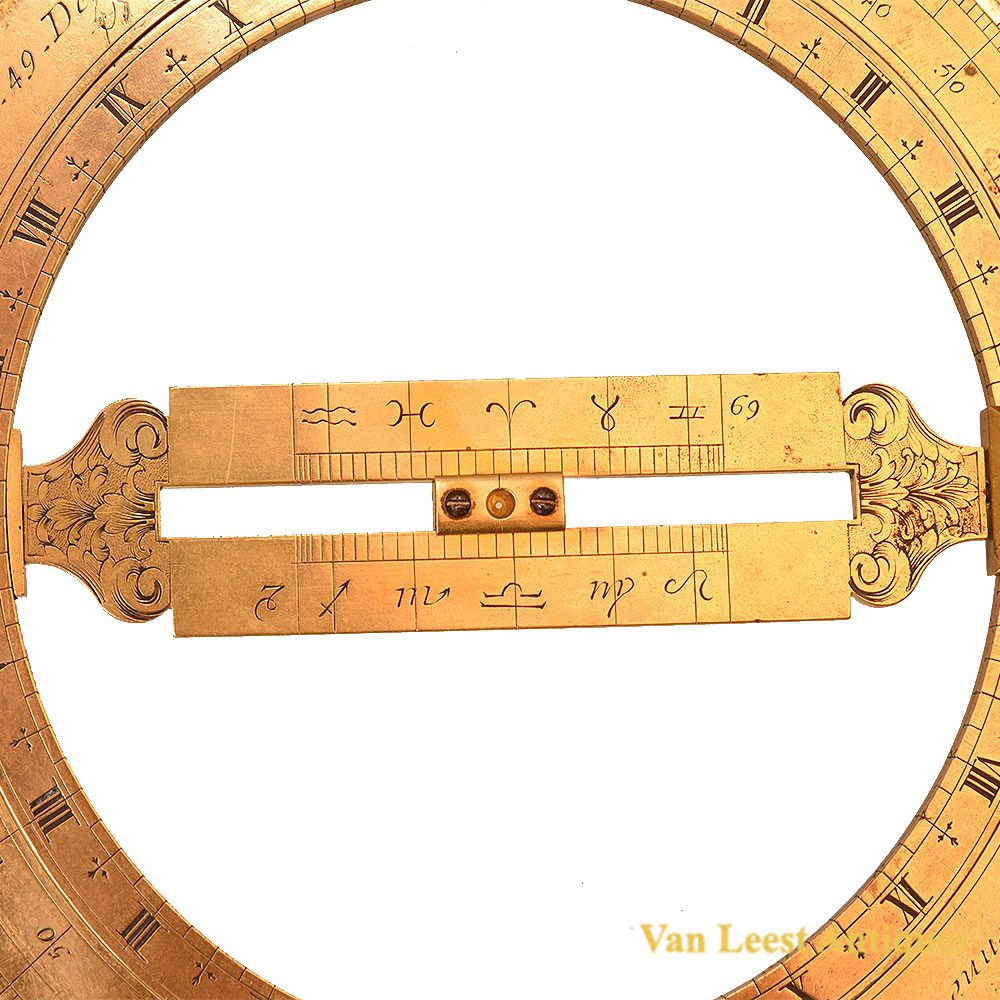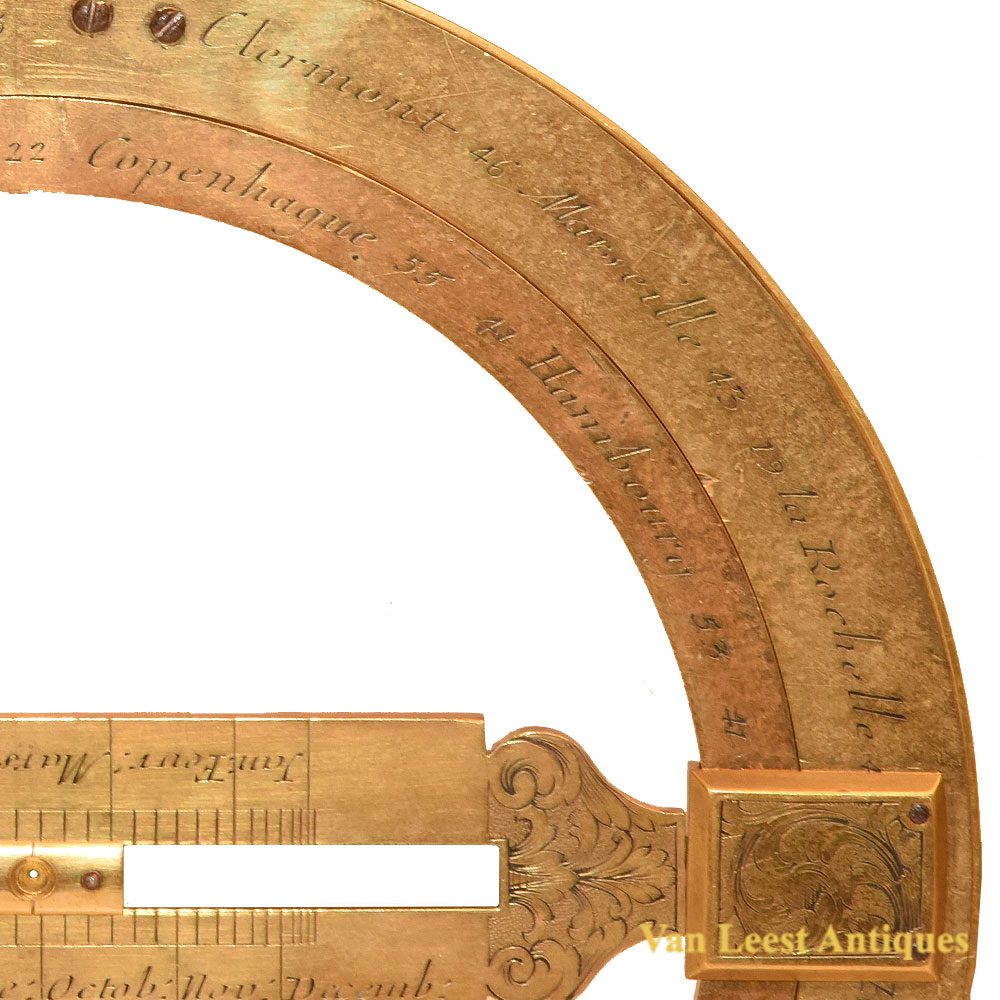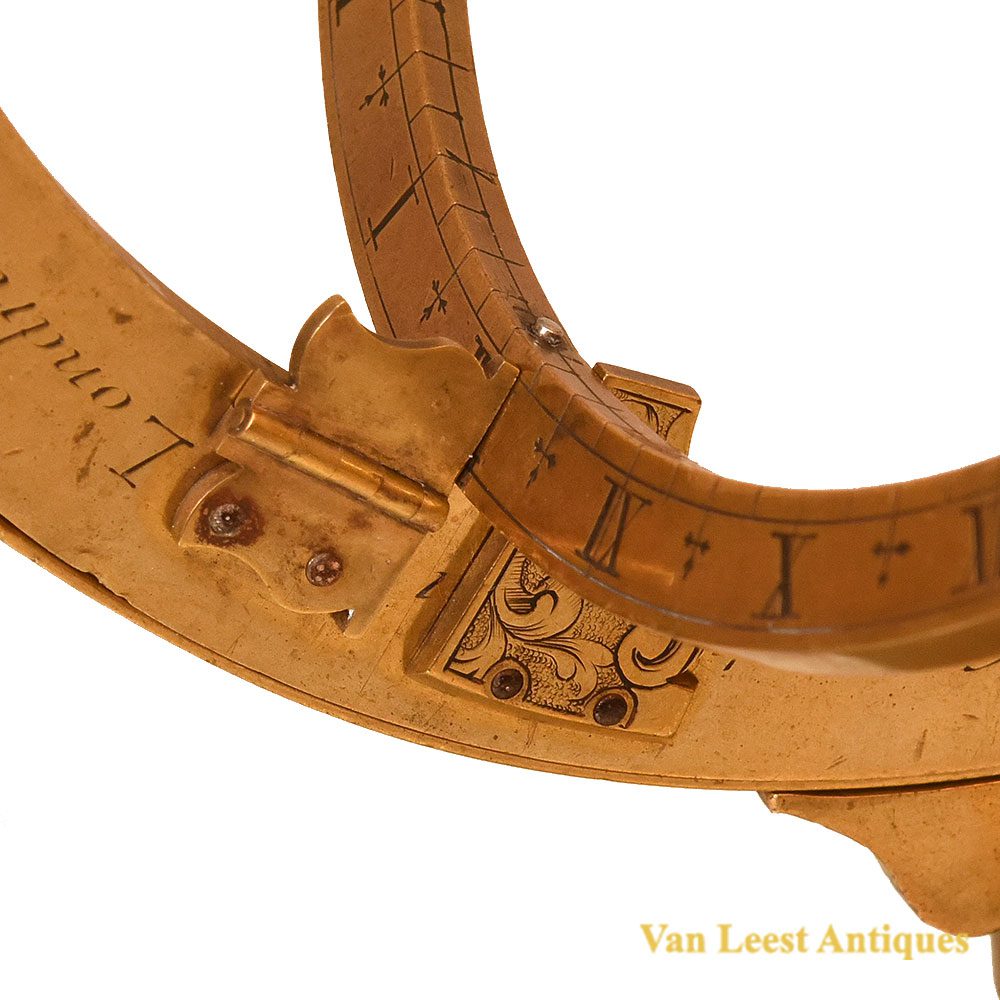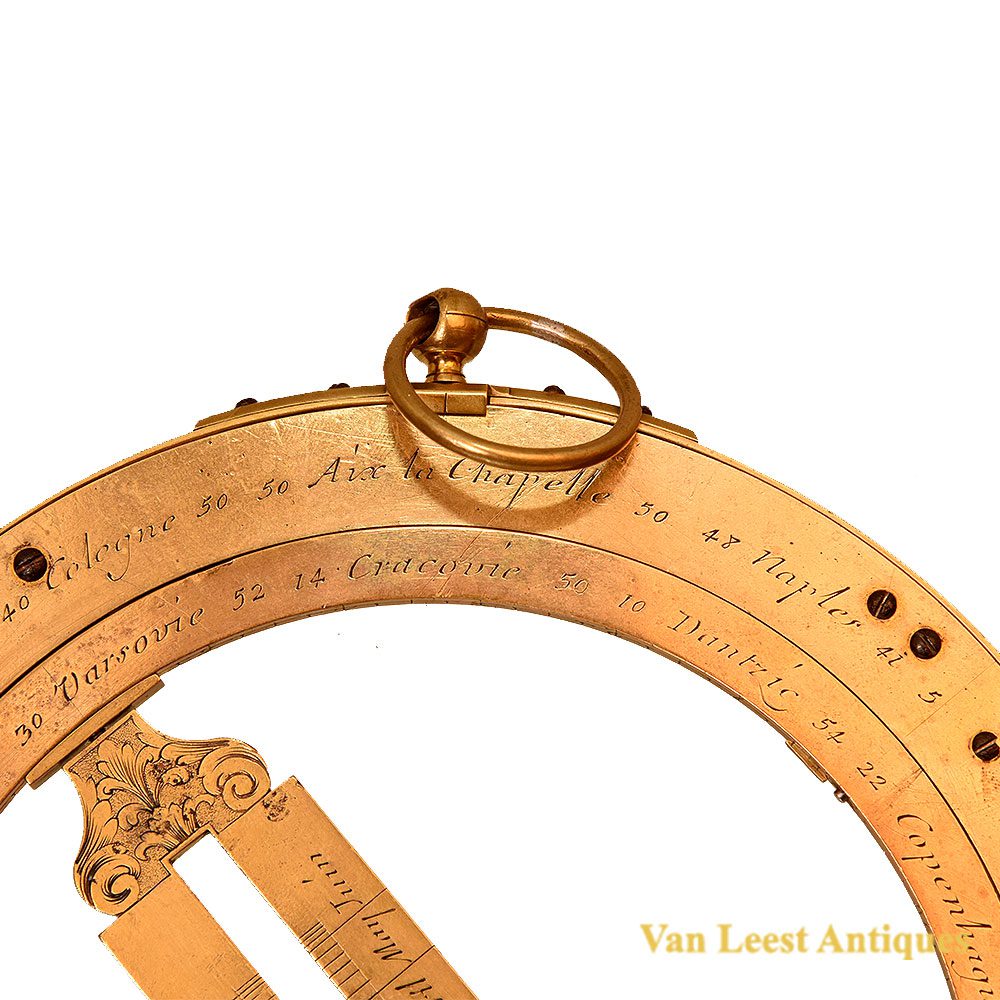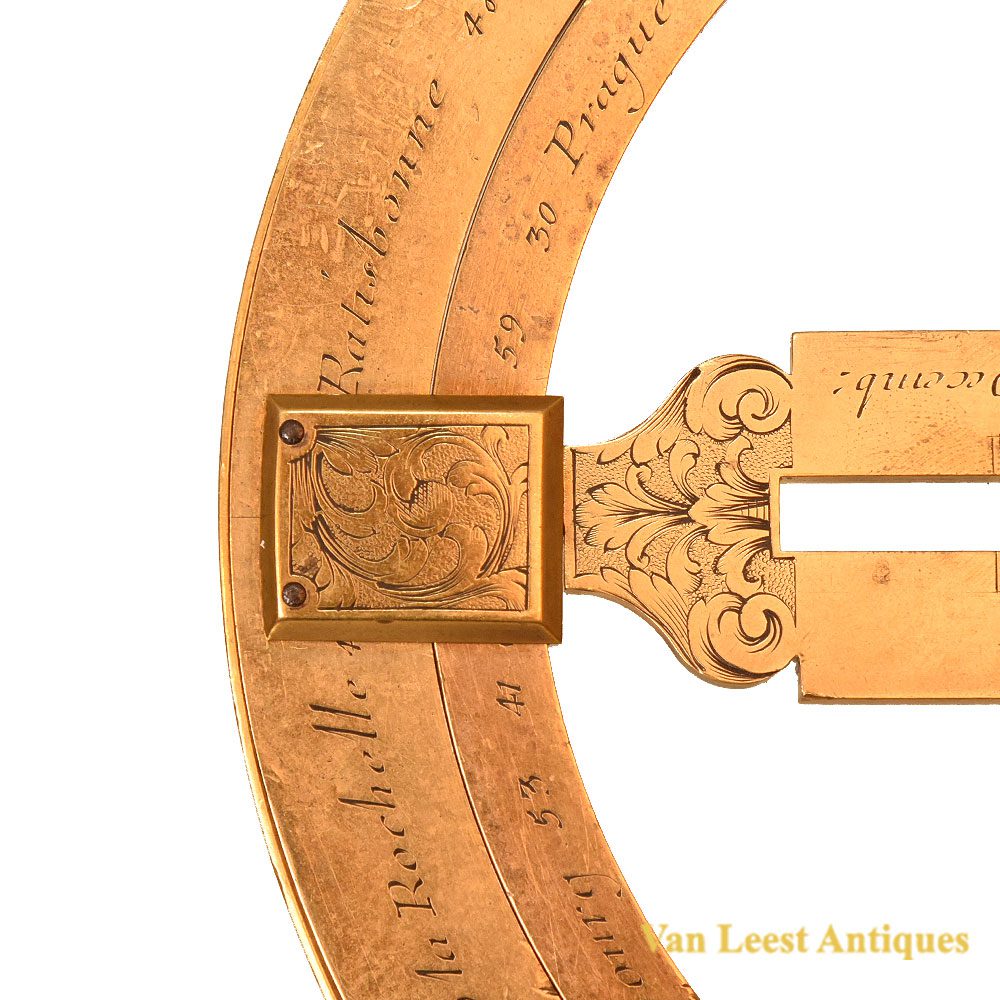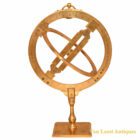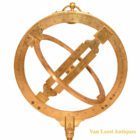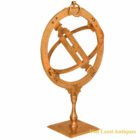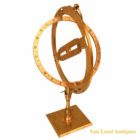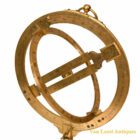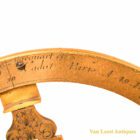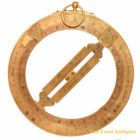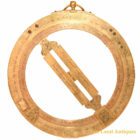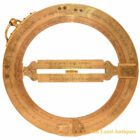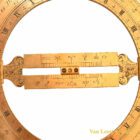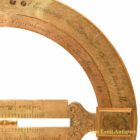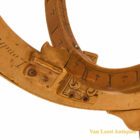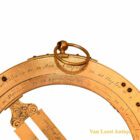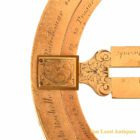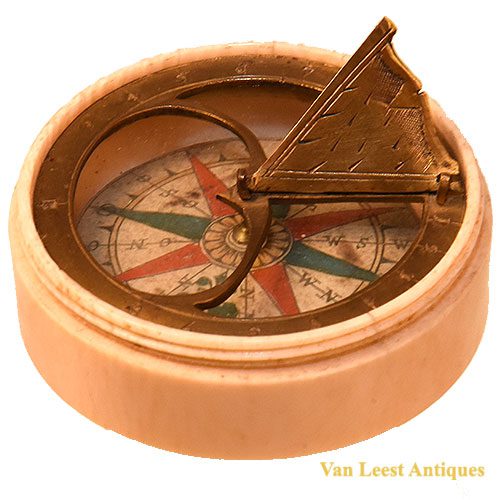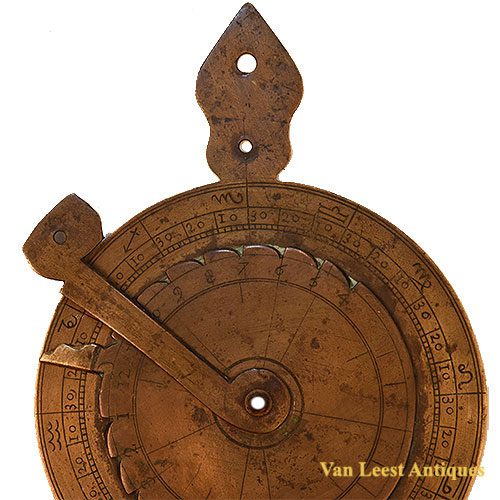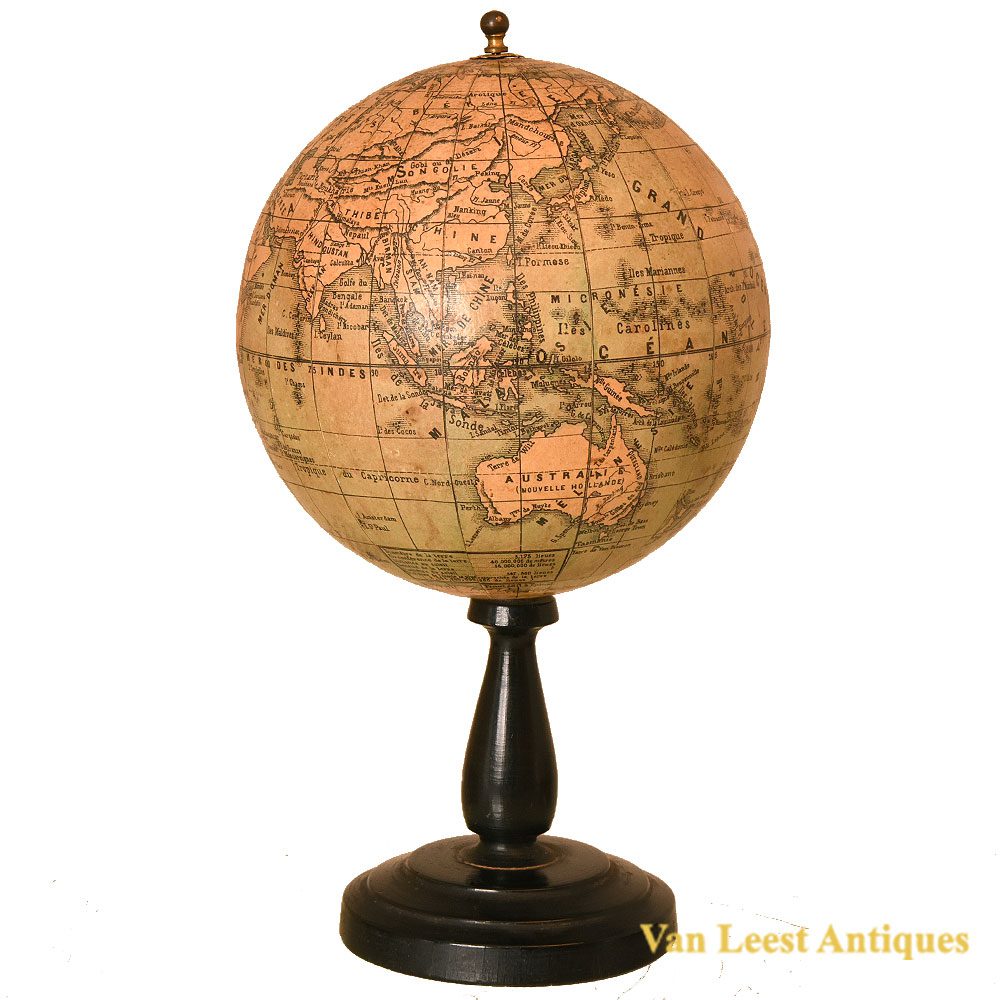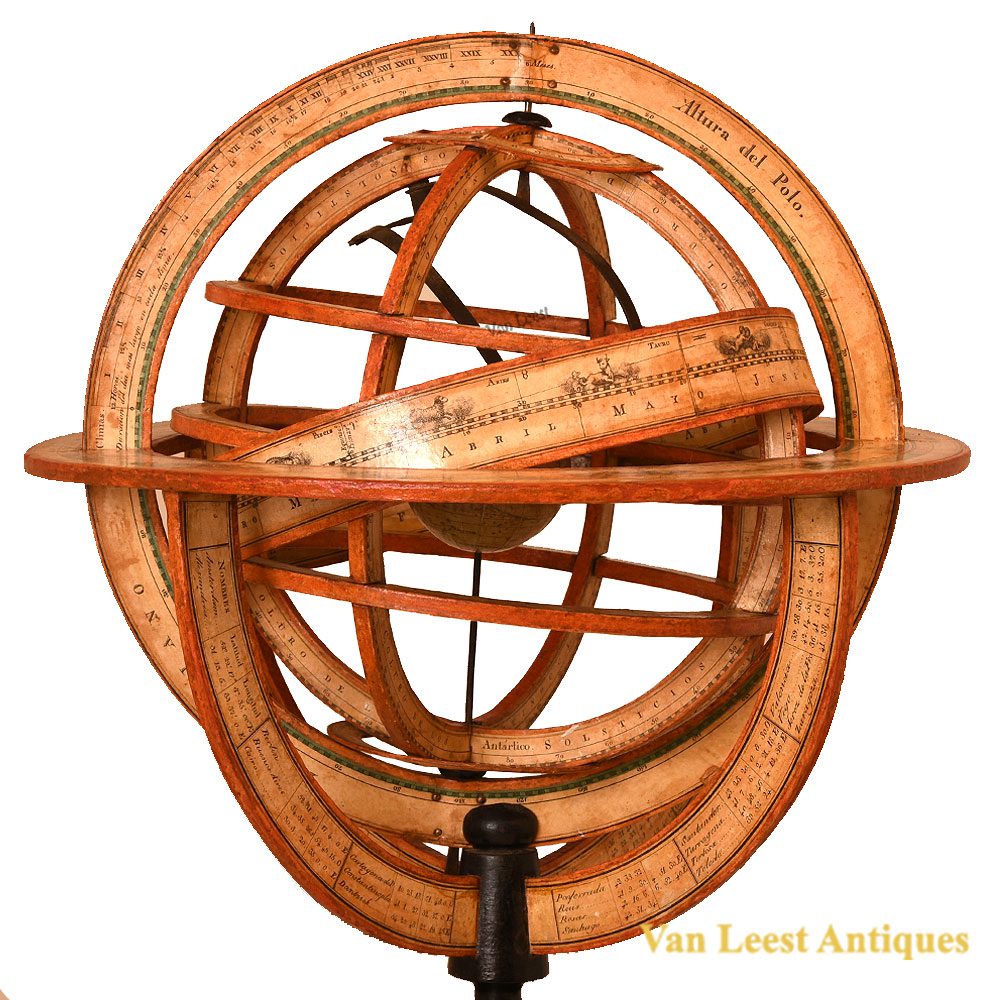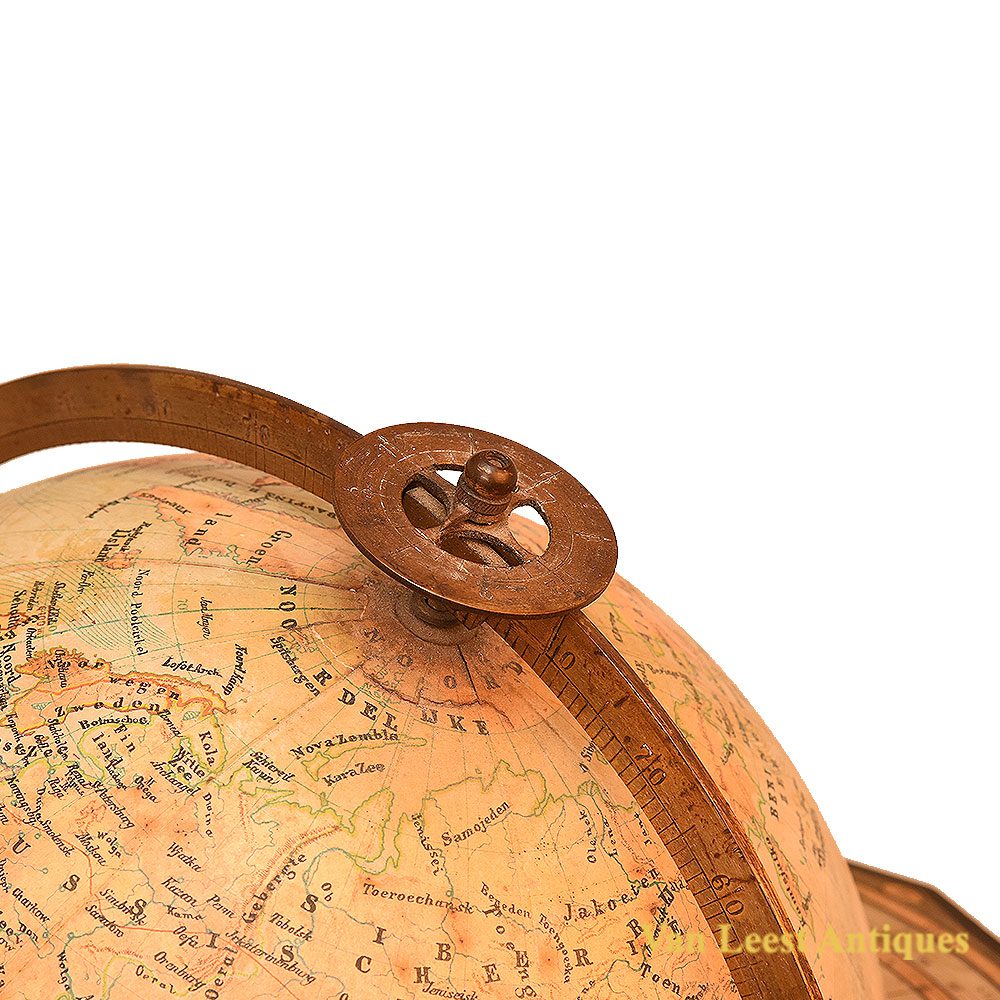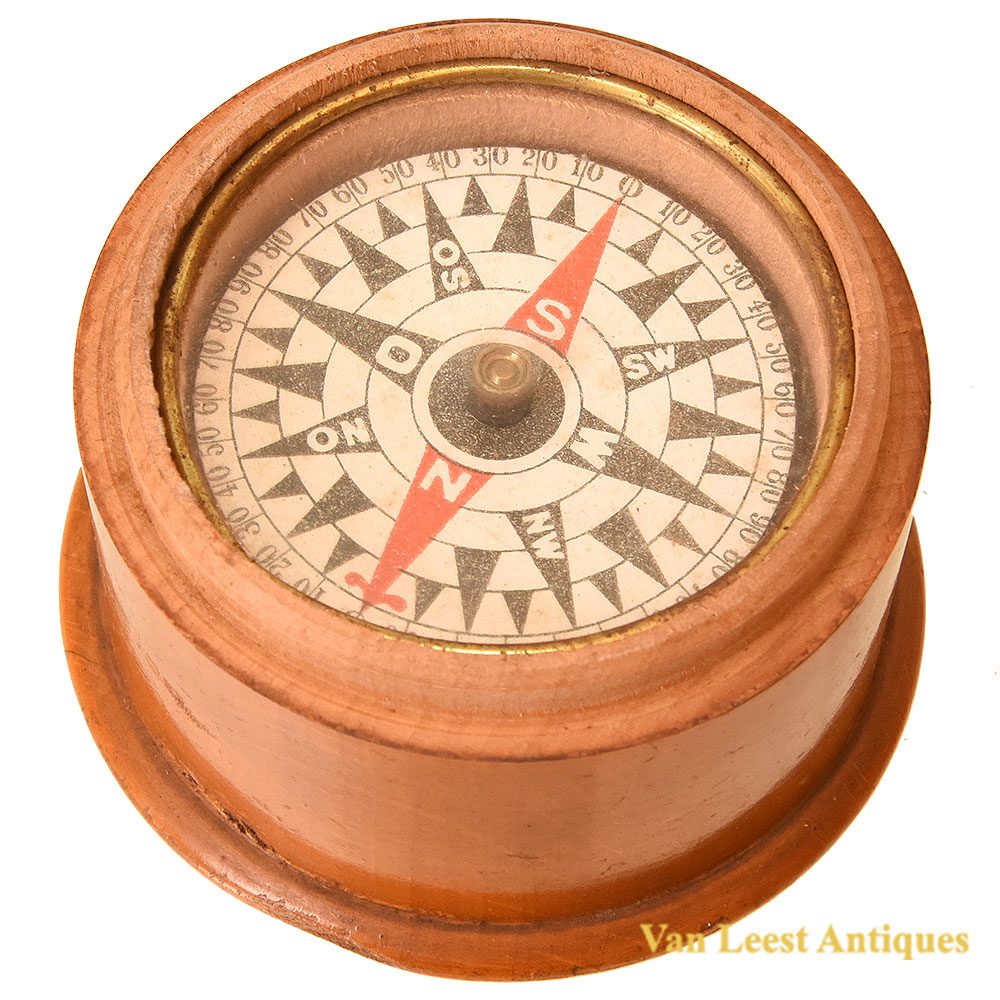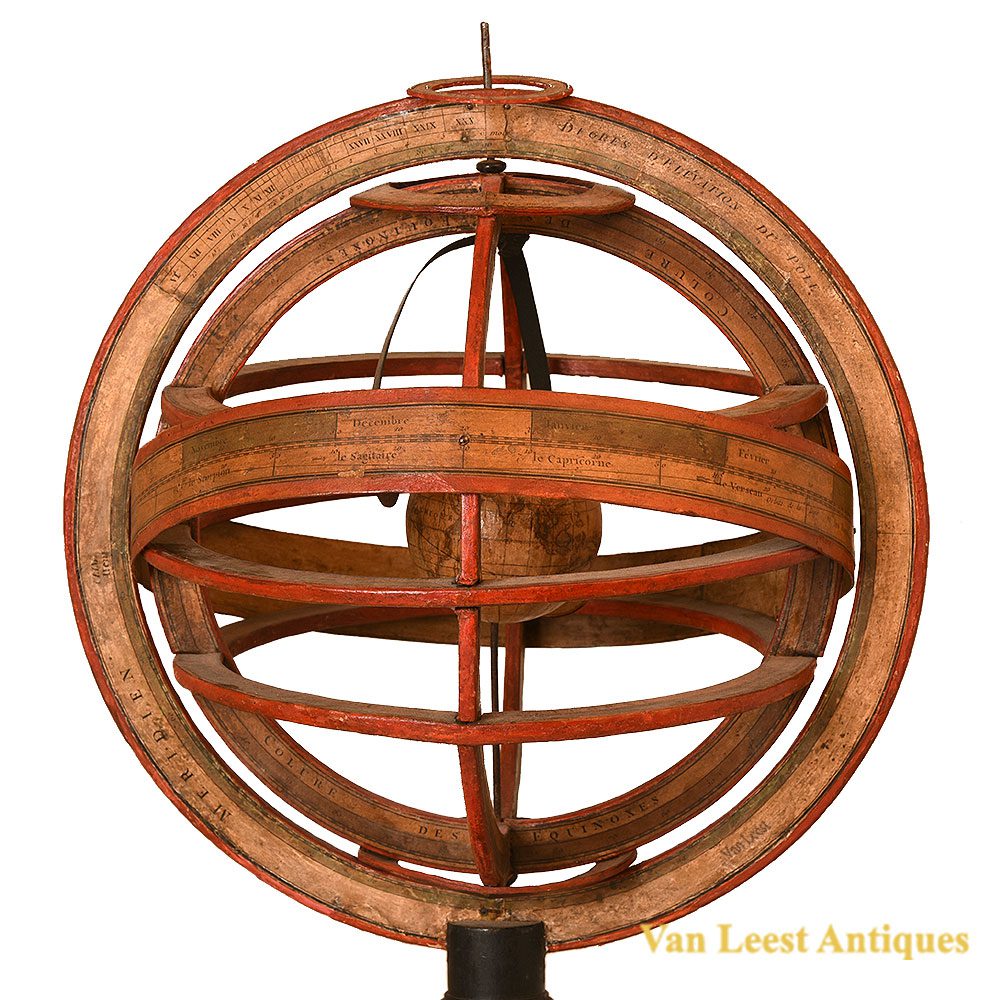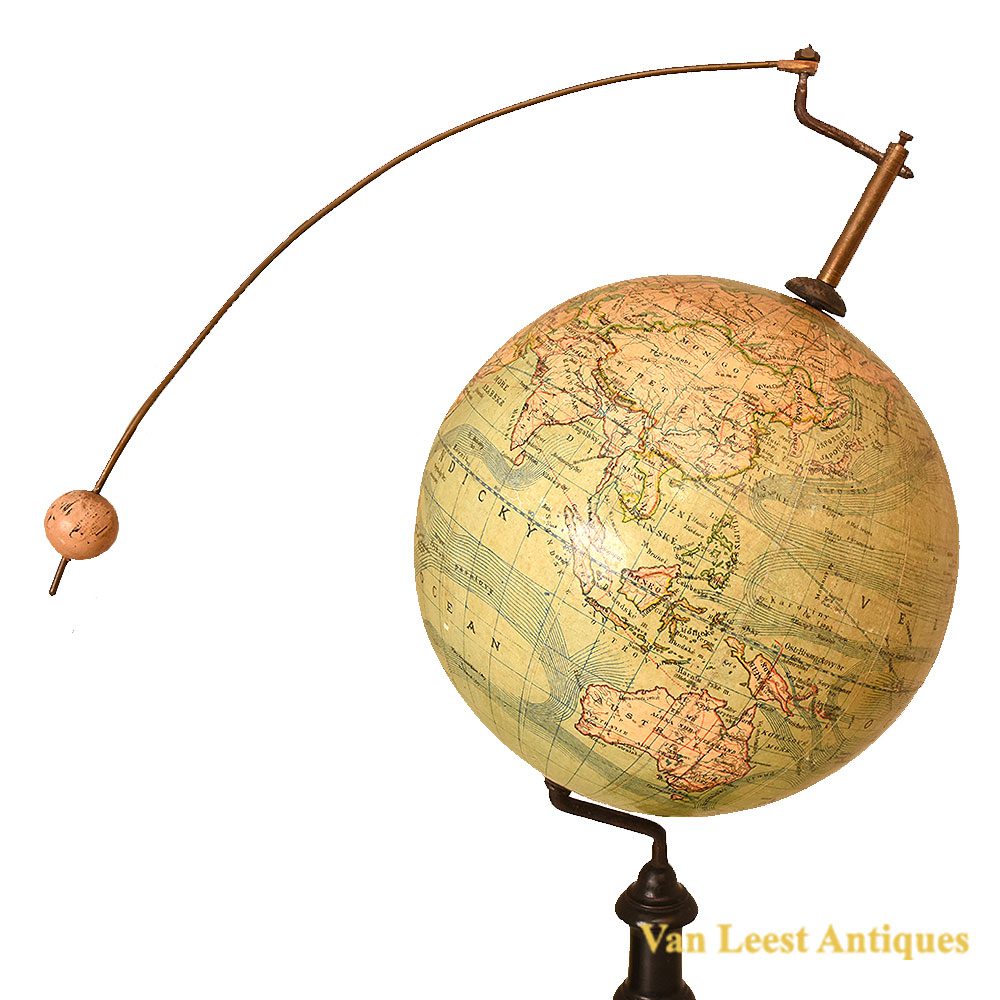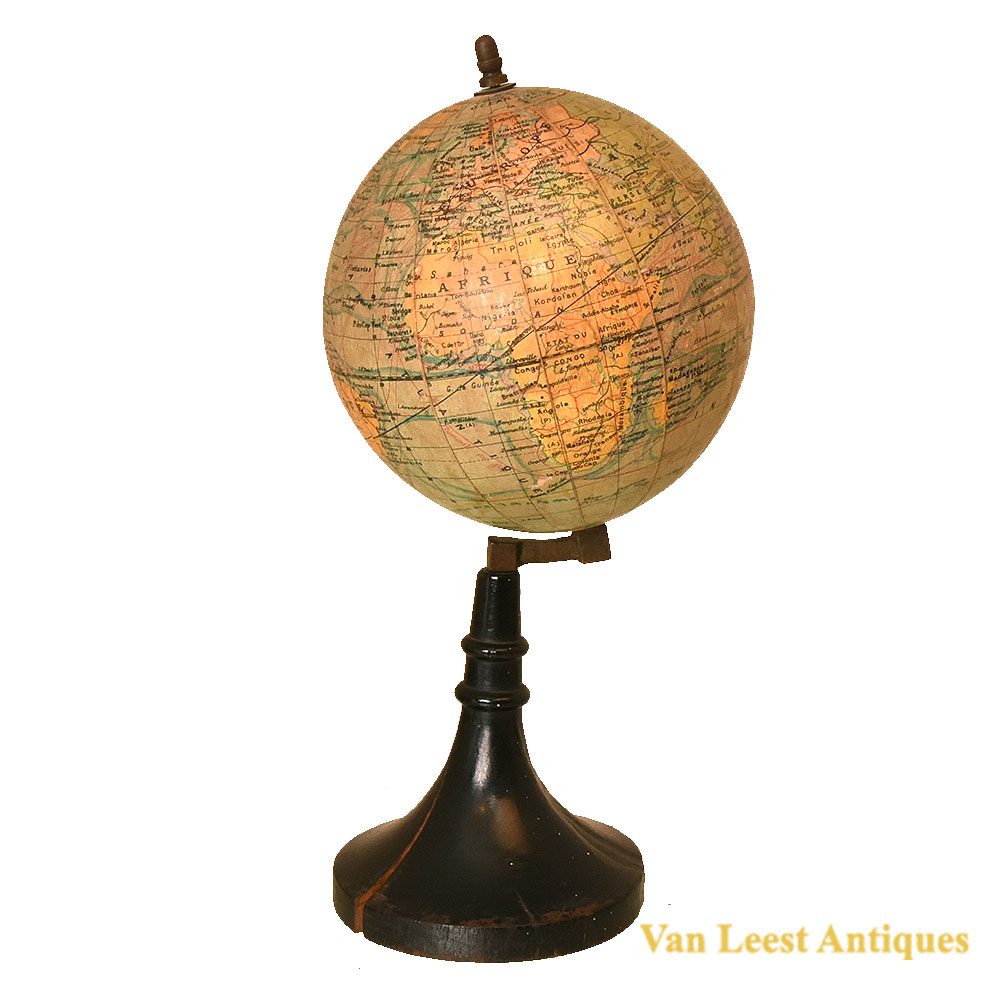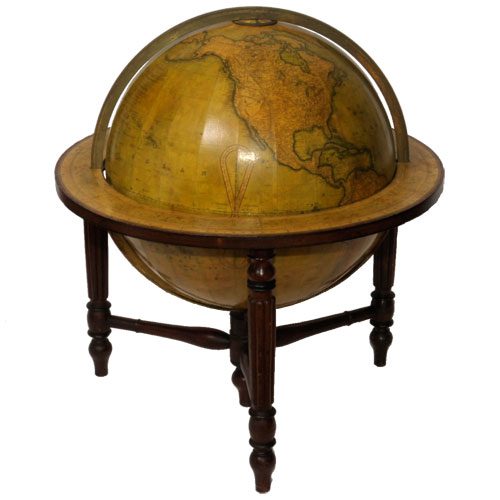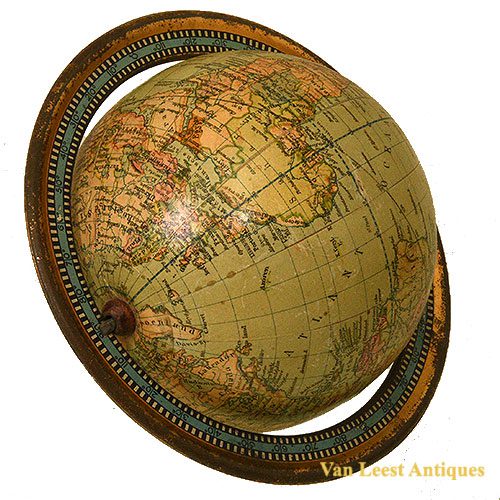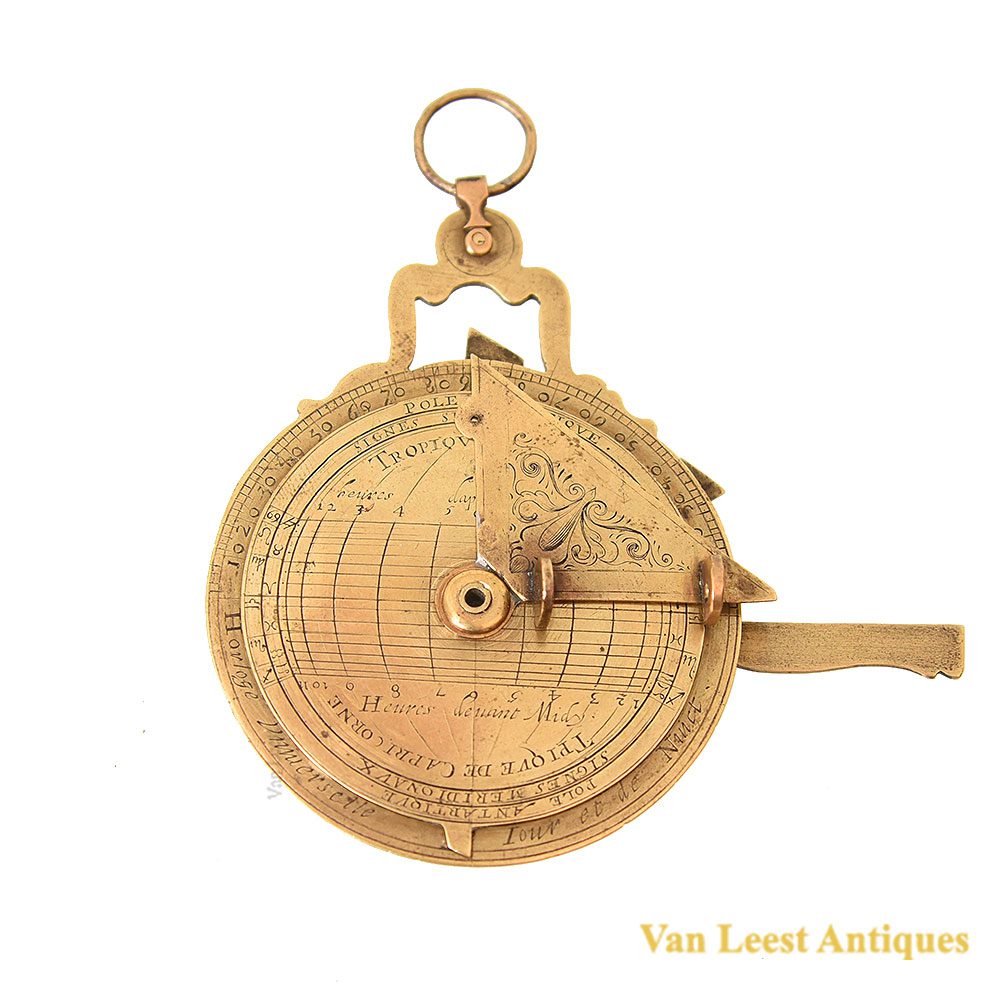Macquart et Cadot Universal equinoctial ring dial, 18th century
On application
Universal equinoctial ring dial by Macquart et Cadot in brass of the first half of the 18th century for use in northern and southern latitudes. It has two concentric rings and a bridge, folding flat when not in use, a suspension ring and a braket moving in grooved outer edges of meridian ring. The meridian ring (outer) has two latitude scales divided clockwise 0°-90° and 0°-80°, numbered by 10°, subdivided to 5° and to 1°.
This side carries the signature ‘Macquart et Cadot A Paris A 49’ (for 49°) and of the four cities in France, Germany and Spain in degrees and minutes: ‘Lion 45 45’, ‘Frankfort 50 4’, ‘Vienne 48 22’ and ‘Madrid 40 10’. The reverse list 12 cities in different countries, but mainly Western European: ‘Cologne 50 50’, ‘Aix la Chapelle 50 48’, ‘Naples 41 5’, ‘Clermont 46’, ‘Marseille 43 19’, ‘ la Rochelle 4’(rest behind bridge), ‘Ratisbonne 48 59’, ‘Dublin 53 11’, ‘Constanti[nople]’(behind bridge), ‘Londres 51 32’, ‘Venise 45 33’, ‘Lisbonne 38 40’.
The equinoctial ring (inner) has an hour scale numbered clockwise I-XII twice and on the inner side from 1-12, divided to 30 and to 15 minutes.
The reverse has a list of eleven mainly Russian cities (of which one behind the bridge): ‘Amsterdam 52 21’, ‘Petersbourg 60’, ‘Moskou 55’, ‘Smolensko 54 30’, ‘Varsovie 52 14’, ‘Cracovie 50 10’, ‘Dantzic 54 22’, ‘Copenhague 55 41’, ‘Hambourg 53 41’ and a city behind the bridge with 59 30. Along the pole axis, a rotating bridge with acanthus patterns allows to adjust a pinhole according to the position of seasons and zodiac. One side of the rotating bridge carries a date scale marked from solstice to solstice by months in French, subdivided to 10 days. The other side carries a zodiac scale, divided to signs marked by their symbols and divided to 10°. A sliding pinhole gnomon is set between bars of the bridge. Note that the stand is probably made later.
This example is signed ‘Macquart et Cadot A Paris’. Henry Macquart was an instrument maker who was trained by Pierre Sevin. In 1688 he made a quadrant for Jean Mathieu de Chazelles and in 1717 the Czar, Peter the Great, visited his shop and purchased two equinoctial dials, a graphometer, a small quadrant and an artillery instrument. Macquart was succeeded by his son in law Michel Cadot. Michel Cadot apprenticed to the famous instrument maker Delure in 1718 in the Founders’ Company.
Height from stand: 25 centimeters
